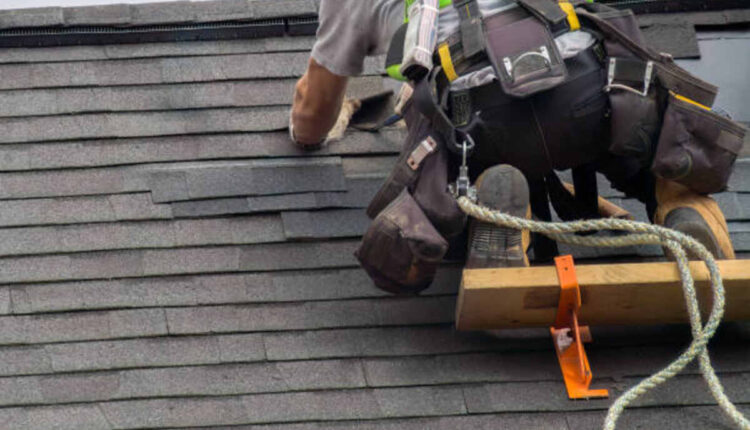Before delving into specific upgrades, it is essential to emphasize the importance of regular roof maintenance. A well-maintained roof is far more likely to survive a hurricane intact than one that has been neglected. Start with a thorough visual inspection of your roof, looking for signs of damage such as missing or damaged shingles, curled edges, or noticeable wear and tear. Addressing these issues promptly can prevent further damage during a storm. The actual Interesting Info about best roofing companies in Tampa.
Clearing gutters and downspouts is another crucial step. Blocked gutters can lead to water pooling on the roof, increasing the risk of leaks and water damage. Ensure that rainwater can flow freely away from your home by cleaning out these channels before hurricane season arrives.
Trimming overhanging tree branches is also vital. Strong winds can cause branches to break and fall onto your roof, causing extensive damage. Reducing the risk of impact by trimming back any overhanging branches can protect your roof from unnecessary harm.
Reinforcing Your Roof: Key Upgrades
Beyond regular maintenance, several specific upgrades can significantly enhance your roof’s ability to withstand hurricane forces.
Securing Shingles and Flashing
Ensuring that all shingles are properly nailed down is a fundamental step. Loose shingles can be easily dislodged by high winds, so re-nailing or replacing weak shingles is essential. Additionally, applying a line of roofing cement around the edges of shingles can provide an extra layer of security.
Flashing, particularly around roof features like chimneys, vents, and skylights, must be in good condition to prevent water intrusion. Gaps or decaying flashing should be patched, reinforced, or replaced by a professional to ensure your roof remains watertight during a storm.
Strengthening Rafters and Trusses
The structural integrity of your roof’s rafters and trusses is crucial during high winds. Applying construction adhesive at the points where these elements join the roof deck can help everything stay together under stress. This simple measure can provide significant reinforcement against the forces exerted by a hurricane.
Hurricane Straps and Tie-Downs
Hurricane straps, or roof tie-downs, are metal straps that connect your roof to the walls of your home, providing added stability during high winds. These straps reduce the risk of your roof being lifted off, a common occurrence in severe storms. While installation may require professional assistance, the added security they provide is well worth the investment.
Advanced Materials and Technologies
In addition to these reinforcements, the choice of roofing materials can significantly impact your roof’s resilience.
Metal Roofs
Metal roofs are highly recommended for hurricane-prone areas like Florida. They can withstand wind speeds of up to 160 mph, making them a robust option against the intense winds associated with hurricanes. Metal roofs also offer the advantage of being resistant to flying debris and can be designed with reflective coatings to reduce energy costs.
Wind-Resistant Shingles
Wind-resistant shingles are another innovation that can enhance your roof’s storm resistance. These shingles are designed to stay in place even under high-speed winds, reducing the risk of shingle loss and subsequent water damage.
Secondary Water Barriers
Installing a secondary water barrier beneath your shingles provides an additional layer of protection against water damage. This barrier ensures that even if the top layer of shingles is compromised, your roof remains intact and watertight.
Financial Incentives for Upgrades
Investing in hurricane-resistant and energy-efficient roofing is not only a wise decision for safety but also offers several financial benefits. Florida homeowners can take advantage of various incentives and grants designed to encourage the adoption of these upgrades.
Programs like My Safe Florida Home and the Home Energy Efficiency & Hurricane Resistance Advantage (HEEHRA) program provide financial assistance for projects aimed at enhancing energy efficiency and hurricane resistance. These initiatives can help offset the costs of installing new roofs or retrofitting existing ones with hurricane-resistant materials.
Additionally, homeowners may qualify for tax credits, rebates, and insurance benefits. For instance, the Florida Clean Energy Grant Program supports projects that promote renewable energy, conserve resources, or cut greenhouse gas emissions. These financial incentives make the investment in a robust, energy-efficient roof more feasible and rewarding.
Professional Inspections and Installation
While some maintenance and inspection tasks can be performed DIY, it is highly recommended to hire a professional roofing company for comprehensive inspections and installations. These experts can identify potential vulnerabilities in your roofing system and provide recommendations for necessary repairs and upgrades.
A professional inspection can reveal issues that might not be apparent to the untrained eye, such as weak spots in the roof’s structure or deteriorating sealants around vents and chimneys. By partnering with a trusted roofing company, you can ensure that your roof is in the best possible condition to face the challenges of hurricane season.
In the face of Florida’s often unpredictable and intense hurricane season, a well-prepared roof is essential for safeguarding your home and family. By implementing thorough inspections, preventive maintenance, targeted reinforcements, and leveraging advanced materials and technologies, you can equip your home with the resilience and strength it needs to weather any storm. These proactive measures not only provide peace of mind but also contribute to a safer, more sustainable living environment for years to come.
Read also: Choosing the Best Moving Company Nearby

